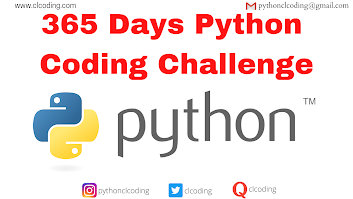Explanation of print(0.1 + 0.2 == 0.3)
In Python, floating-point numbers are represented using binary (base-2) approximation, which can introduce small precision errors.
Step-by-Step Breakdown:
Addition Operation (0.1 + 0.2)
- In decimal (base-10), 0.1 + 0.2 should be exactly 0.3.
- However, in binary (base-2), 0.1 and 0.2 have infinite repeating representations, leading to a small rounding error.
- The actual result stored in memory is slightly greater than 0.3 (approximately 0.30000000000000004).
Comparison (== 0.3)
- Since 0.1 + 0.2 evaluates to 0.30000000000000004, the equality check 0.1 + 0.2 == 0.3 returns False.
Correct Way to Compare Floating-Point Numbers:
Since floating-point arithmetic can lead to precision issues, it's better to use math.isclose():
This method checks if the numbers are approximately equal within a small tolerance, accounting for floating-point errors.










.png)







.png)
























0 Comments:
Post a Comment